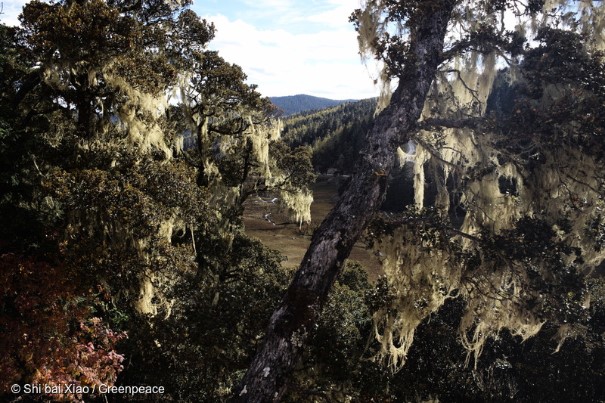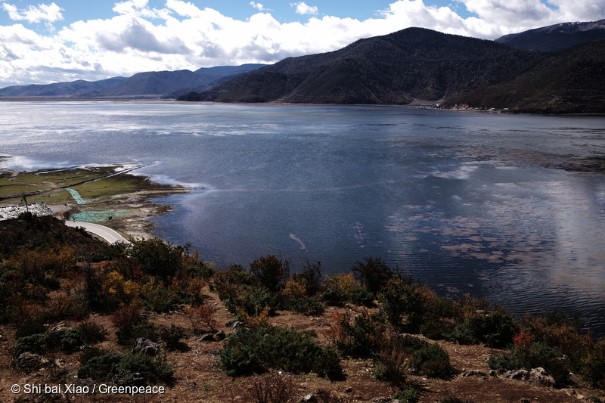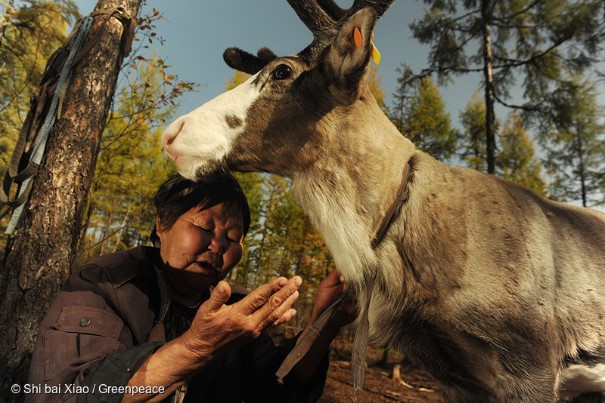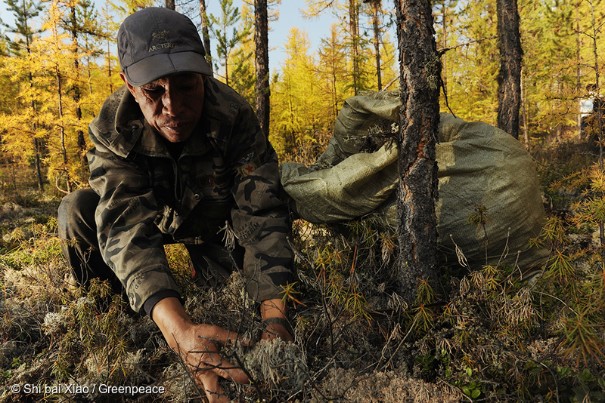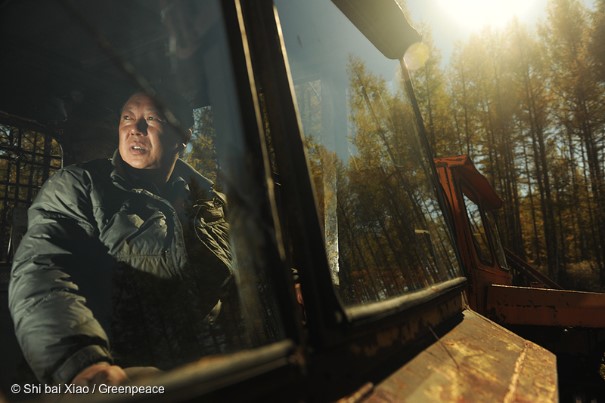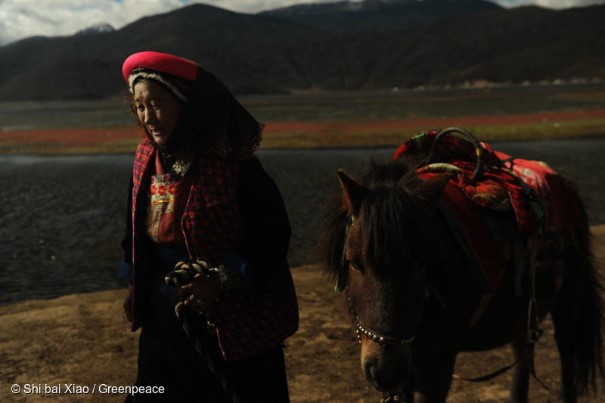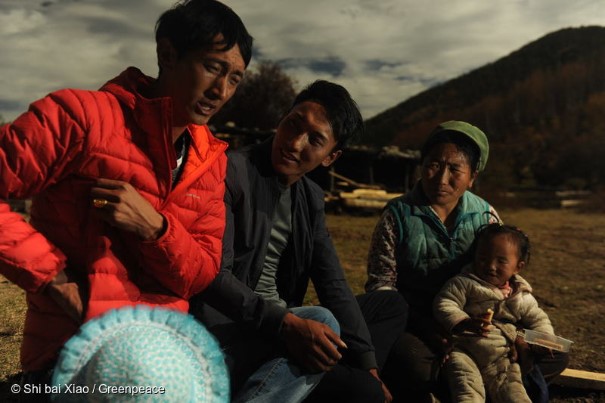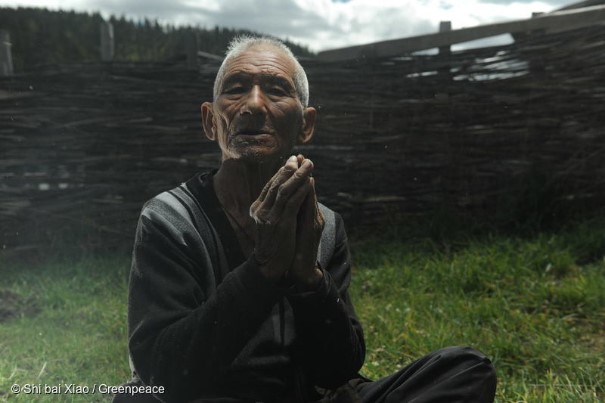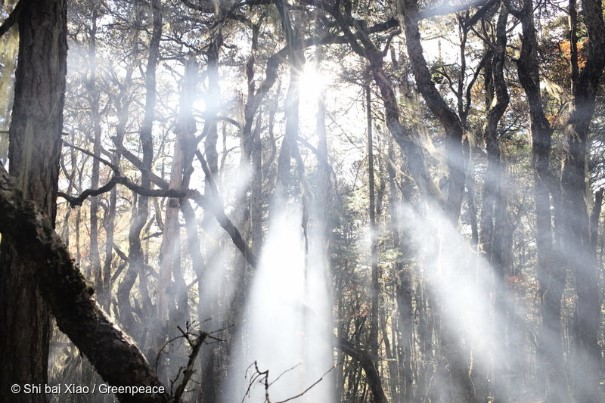For centuries, China’s indigenous people have lived and worked within these remote areas. As climate change and rapid development threatens the existence of the last ‘wonderlands’, these communities are on the front lines of China’s battle to save its few remaining forest landscapes.
China’s forests are some of the most biodiverse habitats on the planet: from tropical rainforests on its southern borders, to high to vast mountain pine forests in the northeast, they are brimming with unique and stunning wildlife.
October 25, 2016. Primary forest in Potatso Forest Park, Shangri-la, Yunnan
But thanks to unchecked illegal logging and mass redevelopment of forested land, China’s forests have shrunk dramatically over the past half century. Now, only a tiny 3.3% of China’s total forest cover counts as ‘intact forest landscape’– forest ecosystems that have been unaltered by human activity.
The Hengduan Mountains and the Greater Khing’an Mountains are two of these rare remaining remaining ‘hidden wonderlands’. Located thousands of kilometers from the heaving megacities of China’s east coast and home to some of China’s highly endangered endemic species, these are the the wildest and most remote pockets of the country.
September 26, 2016. Ergun Wetland Park, Inner Mongolia.
Ewenki people from the borderlands of Siberia, Tibetan herders and villagers from Napa Lake in the mountains of Shangri-la have inhabited these areas for centuries. Now, they are working directly with the government, playing a key role to patrol, protect and preserve these irreplaceable habitats.
Greenpeace China travelled to these last remaining ‘wonderlands’, to meet the people fighting to protect them.
September 19, 2016. Ewenki Reindeer herder Lyu Sia tends a wounded reindeer. She and her husband herd reindeer and patrol the forest for signs of fires, pest and disease control and illegal loggers.
September 19, 2016. Lyu Sia’s husband, Mr Zhai gathers moss to feed their reindeer herd. The couple move home within the forest according to their reindeers’ migration patterns.
September 20, 2016. Mr Zhang used to work as a logger near Uli Kumar in the Khing’an mountain region. Now he is employed in a forest protection team.
October 27, 2016. A Tibetan woman holding a horse by the Napa Lake, Shangri-La, Yunnan Province. Local Tibetan herders have been maintaining the wetlands here for decades ©Xiao Shibai/Greenpeace
October 27, 2016. Jidi Village, Shangri-La, Yunnan Province. Jidi villagers in barley fields.
October 25, 2016. A local man rowing on Napa Lake, Shangri-La, Yunnan Province.
October 27, 2016. Nongbu, the oldest resident of Luorong Village, in Potatso National Forest Park, Yunnan
September 26, 2016. Mr Zhai prepares dinner in A’long Mountain Village, Inner Mongolia
October 25, 2016. Primary forest in Potatso Forest Park, Shangri-la, Yunnan
These images were collected as part of Greenpeace China’s ‘Nature Guardian Project’ mapping and monitoring China’s remaining Intact Forest Landscapes. Visit the project website here (Chinese only)
Yi Lan is a senior Forests Campaigner at Greenpeace East Asia

